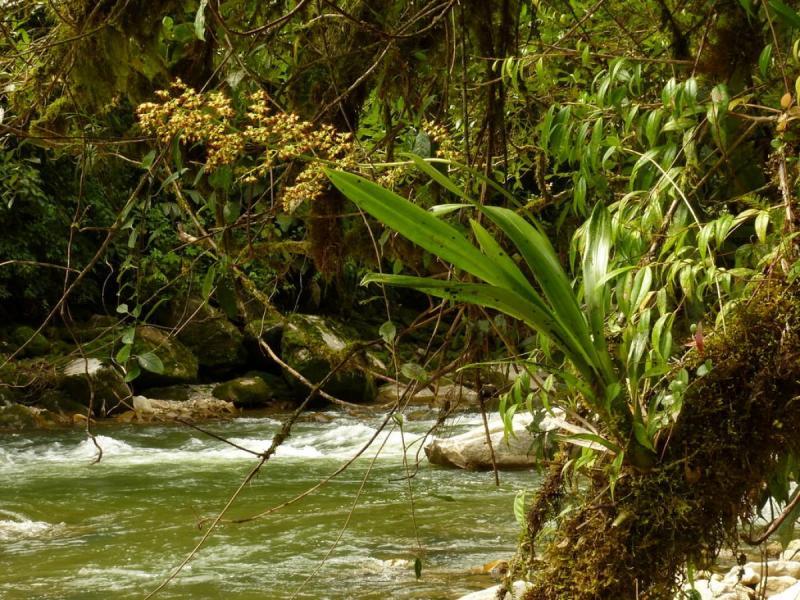Cyrtochilum myanthum
Also known as: The Letter M or Trigonochilum mentigerum Oncidium mentigerum Cyrtochilum mentigerum Dasyglossum mentigerum Odontoglossum myranthum Odontoglossum mentigerum in the subfamily: Epidendroideae
Native to: Departamento del Huila - Colombia Ecuador Peru
General Information
The Letter M is a cold to cool growing epiphytic or terrestrial orchid belonging to the sub family Epidendroideae native to Colombia, Ecuador and Peru.
Plant Description
Grows to 55cm. Each new growth has a single elliptic lance shaped, oblong shaped leaf that grows to 2.5-45cm long. Pseudobulbs grow to 10cm
Care Notes
These orchids have a fine root system that can quickly die back if left dry for too long, but also does not like to be kept wet, so water regularly but ensure that the mix is dry before watering.
Climate
These orchids thrive in humid, cool, shady conditions with good airflow, they will be found under dense forest canopies where they will receive moderate sun exposure throughout the year.
When cultivated they will thrive in a cool, sheltered environment such as a shaded greenhouse, or if grown in cooler climates they can be grown in the garden in areas where they are protected from frost and receive shade throughout the year, though they may be able to tolerate some morning sun during winter.
Grows at high elevations. Rainfall ranges from 23mm to 109mm per day, heaviest in October and lightest in January. Humidity ranges from 73% to 77%, highest in October and lowest in January. Temperature ranges from 8C to 22C, highest in May (11C to 22C) and lowest in February (8C to 19C).Watering
These orchids are sensitive to excessive watering and should only be watered when they look thirsty. Water infrequently and ensure that the roots are dry before watering. Keep an eye on them especially during hot weather as overwatering can lead to rot, whereas underwatering may result in wilting or shriveling, which while unattractive, will not kill the plant.
Fertiliser
These plants do well with slow release fertiliser at the rate of 2-3 pellets per cup (250ml) of media. Additional fertiliser during the growth period may be beneficial, but not necessary.
Reduce fertiliser when plant is dormant during Spring.Potting
These plants can be sensitive to repotting though should not require repotting regularly. Repotting should be done when the mix has broken down to the point that it doesn't absorb water or holds onto water for far too long, usually the plant shows a decline in growth as well.
The mix should be free draining, with a blend of 30% inorganic ingredients such as coarse sand, gravel or perlite, mixed in with about 70% organic ingredients such as peat, leaf litter or decomposed bark. Avoid commercial potting mixes as they can vary wildly and may contain "wetting agents" that can hold onto water for loo long, causing rotting and stunted growth.
This plant does well mounted.











